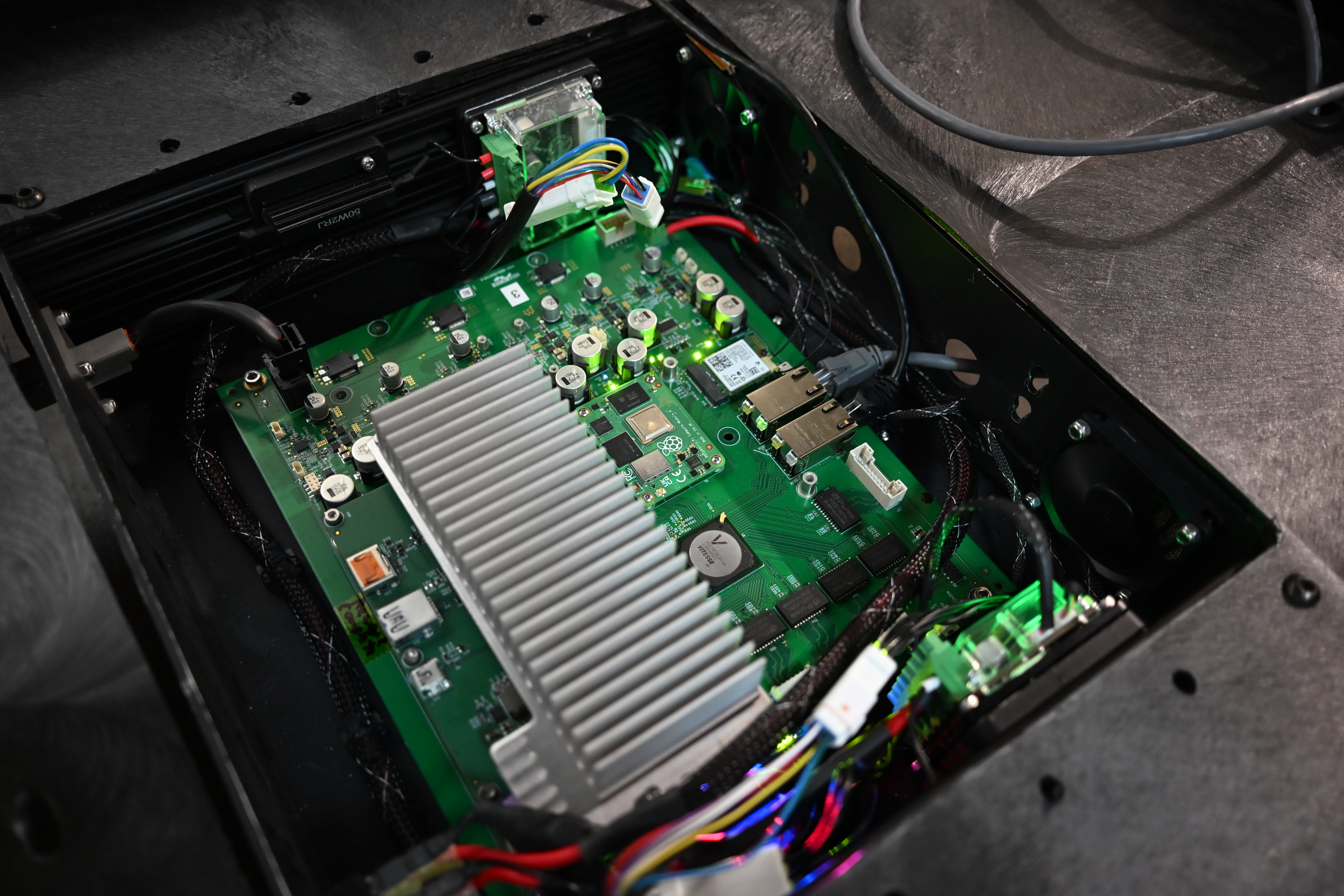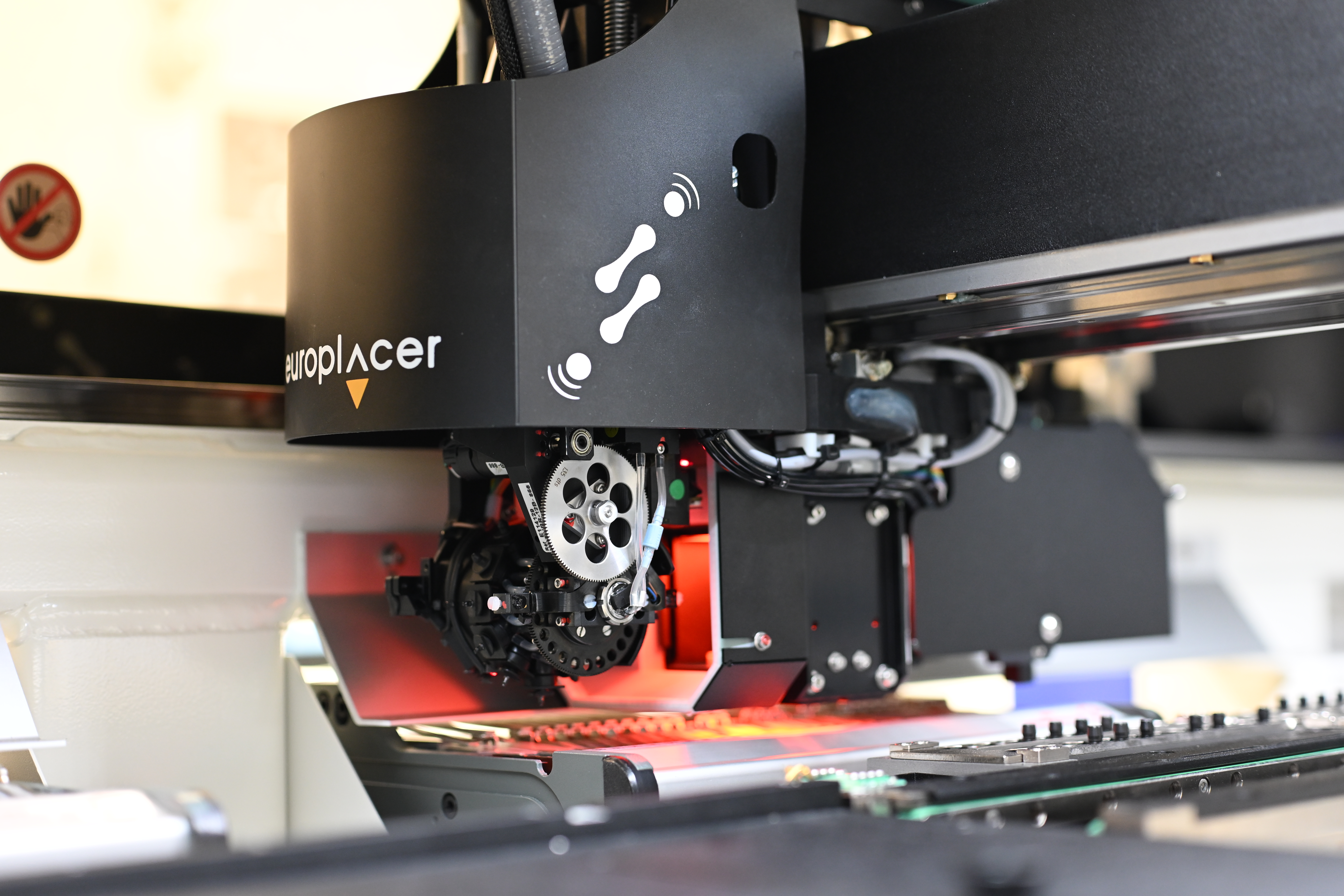Vision systems for manufacturing have sophisticated cameras, processors, and sensors. They utilize advanced imaging technology and complex algorithms to capture and analyze vast amounts of visual data faster and more efficiently than humans.
Here are some components of vision systems.
- Cameras: These are the eyes of vision systems. Some vision systems utilize 2D or 3D cameras, while others have a highly advanced industrial AI camera that processes images and videos using AI.
- Processor: This processes visual data using algorithms.
- Image Sensor: This converts optical images into electronic signals. Sensor resolution and sensitivity affect vision systems’ ability to detect finer details and operate in different lighting conditions. Vision systems usually utilize two types of sensors – CMOS and CCD.
- Lighting: Vision systems use backlights, front lights, and strobe lights to capture every detail.
- Software: This is used to set up vision systems and process images. It can carry out several tasks, including object detection, pattern recognition, and taking dimensional measurements.
- Output Devices: These include monitors, alarms, and robotic arms. After images are processed, the information is used to guide output devices.
Why Use Vision Systems For Manufacturing?
When appropriately used, vision systems offer the following benefits.
Quality Control
Vision systems detect the minutest defects and irregularities that humans can easily miss. They can inspect products at different stages of manufacturing and help manufacturers ensure that only products that meet quality requirements proceed further along the production line.
Cost Reduction
Vision systems can help reduce waste and manual labor and minimize rework, leading to cost savings. Manufacturers can use vision systems to ensure product compliance, which helps reduce product recalls.
Improved Efficiency
Vision systems reduce the need for manual checks by automating the inspection process. They also help eliminate manufacturing bottlenecks, speeding up the manufacturing process. Unlike humans, vision systems do not need breaks or rest and can work 24/7.
Flexibility
Advanced vision systems are highly flexible and can be configured for different tasks or products. They allow manufacturers to respond swiftly to changes in product designs or the manufacturing process. As production volume grows, a vision system can be scaled up.
Enhanced Safety
Industrial accidents are a recipe for disaster. In addition to resulting in serious, sometimes life-altering injuries, industrial accidents can lead to equipment failure or damage
(a common cause of unplanned downtime). Manufacturers can use vision systems to proactively identify and address safety concerns and ensure safety compliance.
Data Collection and Analysis
Vision systems can collect a plethora of manufacturing data that manufacturers can analyze to gain insights into their manufacturing processes. Data can help manufacturers better plan predictive maintenance, optimize processes, and improve product design.
Hellbender is committed to helping manufacturers improve their manufacturing processes. Our AI-powered vision systems capture the tiniest details, which manufacturers can analyze to identify process improvement opportunities.
Pull facial recognition references.


